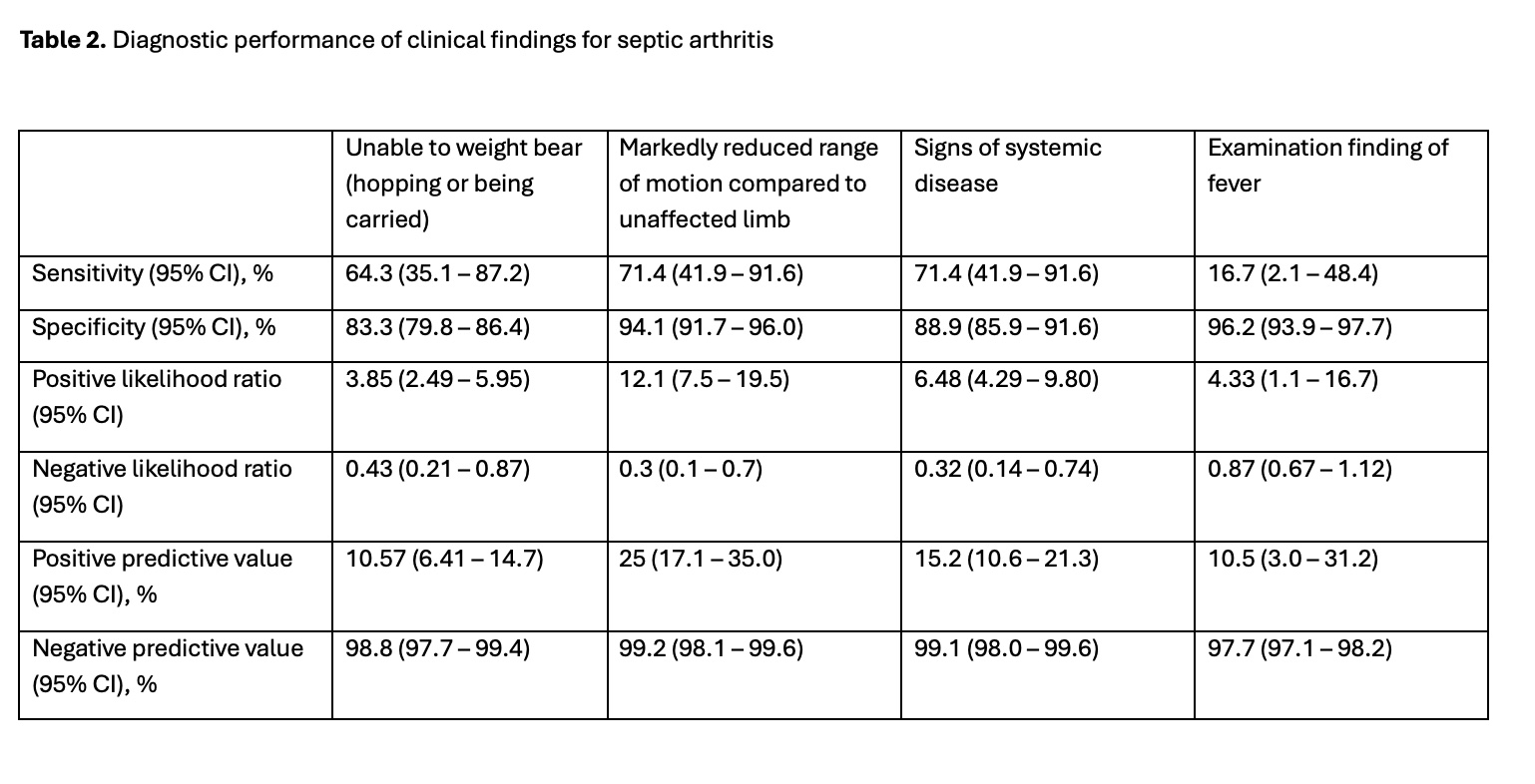Emergency Medicine 3
Session: Emergency Medicine 3
447 - Test characteristics of clinical findings and clinical decision rules for the diagnosis of septic arthritis in children with an acute limp presenting to the emergency department.
Friday, April 25, 2025
5:30pm - 7:45pm HST
Publication Number: 447.6591
Jacky Tu, Monash University Clayton, Clayton, Victoria, Australia; Stephanie A. Lam, Launceston General Hospital, Melbourne, Victoria, Australia; Chiharu Yamano, Chiharu Yamano, Melbourne, Victoria, Australia; Eldho Paul, Monash University, Melbourne, Victoria, Australia; Olivia Ghobrial, Monash University, Melbourne, Victoria, Australia; Peter Gowdie, Monash Children's Hospital, Clayton, Victoria, Australia; Simon Craig, Monash University, Clayton, Victoria, Australia

Simon Craig, MBBS FACEM MPH MHPE PhD (he/him/his)
Paediatric Emergency Physician / Adjunct Clinical Professor
Monash Health / Monash University
Clayton, Victoria, Australia
Presenting Author(s)
Background: Acute limb pain in young children presenting to the Emergency Department (ED), although often benign, can be a sign of serious pathology, with septic arthritis being the most important condition to rule out. Two clinical decision rules have been developed to assist with the diagnosis: Kocher’s rule (which allocates points for fever, weight-bearing status, white cell count and erythrocyte sedimentation rate) and Caird’s rule (which also includes C-reactive protein).
Objective: This study aimed to determine (a) the diagnostic accuracy of the two rules for the identification of septic arthritis, and (b) other clinical features most strongly associated with septic arthritis.
Design/Methods: Prospective observational study of consecutive children aged <16 years with non-traumatic acute limp presenting to three EDs in over a 26 month period. Data was prospectively collected on weight-bearing status, duration of symptoms, joint examination findings and signs of systemic disease. Additional data was extracted from structured chart reviews and telephone follow-up.
Results: Of 535 of 583 (91.8%) eligible patients with sufficient follow-up data, 14 were diagnosed with septic arthritis. Kocher’s rule had an Area under the Receiver Operating Characteristics Curve (AUC) of 0.72, while Caird’s rule had an AUC of 0.78 for septic arthritis. Univariable analysis demonstrated strong associations between range of joint motion, signs of systemic disease, hip pain, presence of fever and septic arthritis. Markedly reduced range of motion compared to the unaffected side had the highest positive likelihood ratio (12.1, 95% CI: 7.5 - 19.5). None of the tested clinical findings had a negative likelihood ratio less than 0.3, or a sensitivity of over 72%.
Conclusion(s): Septic arthritis is a relatively uncommon diagnosis in children presenting to the ED with an acute limp. Markedly reduced range of motion and inability to weight bear appear to be the strongest predictors of septic arthritis, however, their absence is insufficient to rule out the diagnosis.
Figure 1
.png) Participant flow
Participant flowTable 1.
.jpg) Demographic and clinical features, and investigations ordered in children with and without a final diagnosis of septic arthritis
Demographic and clinical features, and investigations ordered in children with and without a final diagnosis of septic arthritisTable 2
 Diagnostic performance of clinical findings for septic arthritis
Diagnostic performance of clinical findings for septic arthritisFigure 1
.png) Participant flow
Participant flowTable 1.
.jpg) Demographic and clinical features, and investigations ordered in children with and without a final diagnosis of septic arthritis
Demographic and clinical features, and investigations ordered in children with and without a final diagnosis of septic arthritisTable 2
 Diagnostic performance of clinical findings for septic arthritis
Diagnostic performance of clinical findings for septic arthritis
